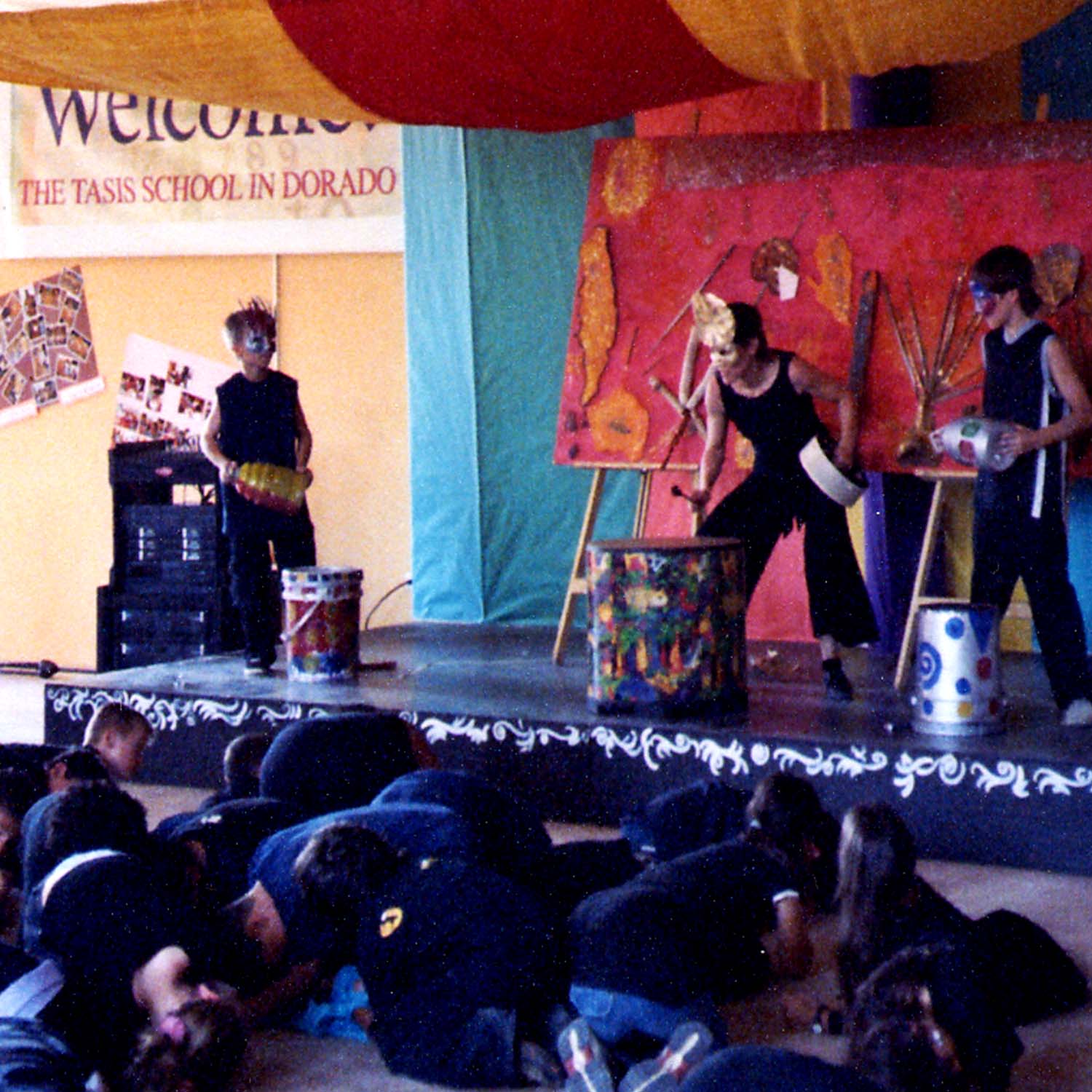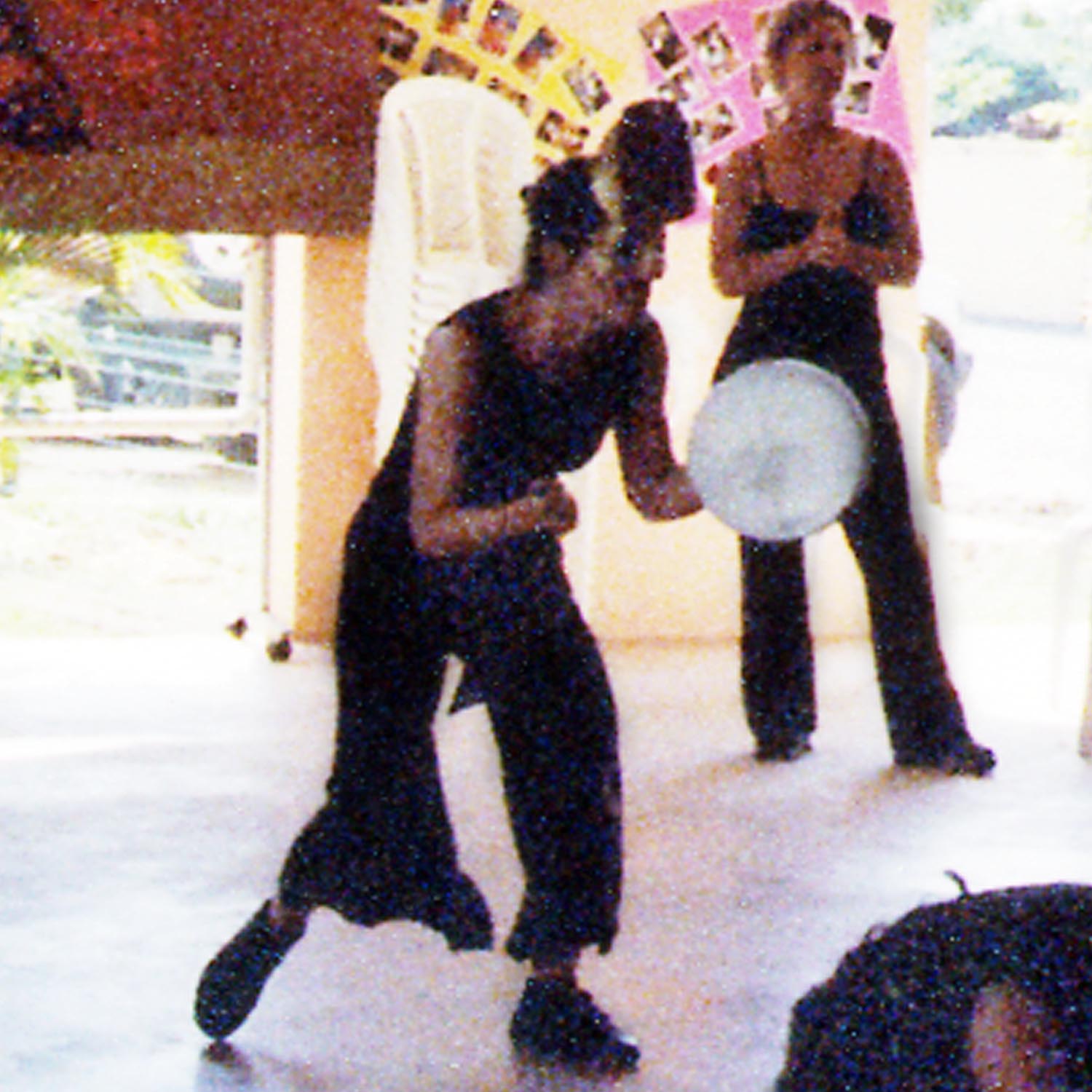TASIS in Dorado, Puerto Rico
In June 2006, The TASIS School in Dorado, Puerto Rico, invited Amanta Scott to conduct a two-and-a-half week Syncretic Art Workshop for two groups of forty students age seven to ten and eleven to fourteen years.
The theme of the workshop was the dance of the elements: water, earth, wind, fire and spirit. Each group of students worked with Amanta for approximately two hours per day.
The workshop culminated in a public performance and exhibition of masks and paintings for family, friends and staff.
Syncretic Art is an avant-garde contemporary art form integrating visual art, music, dance, theatre and humanities. It is a process-oriented art form in which participants discover and create their own responses and approaches to expressing themselves through the fusion of artistic disciplines.
Aims of the workshop:
- to introduce students to fundamentals of Syncretic Art
- to introduce students to graphic scoring as a means to communicate artistic intent in many disciplines
- to introduce students to mask making & costume design
- to foster creative expression any medium: art – drawing, painting, sculpture, mask; sound, music, movement & performance.
- to foster a positive learning environment
- to expand the artistic vocabulary
- to encourage the development of new skills
- to foster leadership skills & cultivate the ability to work individually & collaborate in groups
- to foster personal identification with & respect for the environment & the world around us
What the students learned:
- how a composer, artist and/or choreographer creates a work
- how graphic scoring can be used to indicate mood & dynamics in music & performance
- how graphic scoring can be used to indicate mood & dynamics in music & performance
- how graphic scoring can be used to indicate mood & dynamics in music & performance
- how graphic scoring can be used to communicate choreographic & dramatic ideas
- how to integrate sound, movement & visual art
- how a conductor/director, composer or choreographer interprets a score & teaches it to performers
- how to perform a piece of art, music, dance or theatre
- how, as a performer, to differentiate between the feeling of being truly “in the part” versus pretending or “going through the motions.”
- cognitive links between environmental issues & creating work for art, music, dance or theatre
- how a performer or artist utilizes props or found objects
- how to work with other performers

























